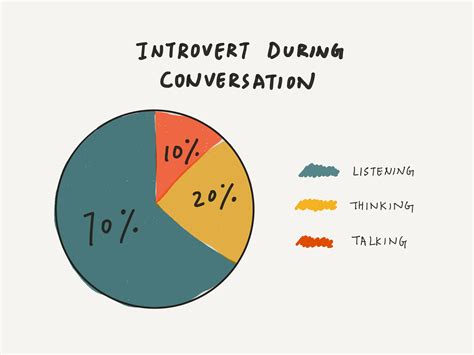
A pale blue-eyed pug named Koi, affectionately dubbed a “Panda Pug” due to its unique coloration, is captivating audiences online with its charming interactions and apparent “conversations” with its owner. Koi’s distinctive appearance and vocalizations have garnered significant attention, transforming the canine into an internet sensation.
Koi, a four-year-old pug residing in Los Angeles, California, has become an online star thanks to its striking pale blue eyes and distinctive markings, leading to the “Panda Pug” moniker. Koi’s owner, identified as Ashley, frequently shares videos of their interactions on social media platforms, particularly TikTok and Instagram, where Koi’s expressive vocalizations resemble human-like conversations. “People are just obsessed with his coloring,” Ashley noted, highlighting the widespread fascination with Koi’s unique appearance.
The videos showcase Koi engaging in what appears to be back-and-forth exchanges with Ashley. While Koi doesn’t speak human language, its series of grunts, groans, and other vocalizations are interpreted by Ashley and viewers as responses to questions and comments. This interactive dynamic has fueled the dog’s popularity, with many finding the “conversations” endearing and humorous. “He’s so vocal,” Ashley said, emphasizing that Koi’s communicative nature is a significant part of his appeal.
The online community has embraced Koi, praising its unique look and personality. Many users comment on the dog’s exceptional cuteness, with expressions like “adorable,” “precious,” and “one of a kind” frequently appearing in the comments sections. Some have even drawn comparisons to other animals, further amplifying Koi’s charm. Koi’s rising stardom reflects a broader trend of pet-related content dominating social media, where animals with unusual traits or engaging behaviors often attract a substantial following.
The phenomenon of attributing human-like qualities to pets is not new. For centuries, humans have projected emotions and intentions onto animals, particularly those with whom they share a close bond. This anthropomorphism can enhance the connection between humans and animals, fostering a deeper sense of companionship and understanding. In Koi’s case, the perception that the dog is “talking” contributes to the audience’s emotional investment in the animal and its interactions.
The “Panda Pug’s” success also illustrates the power of visual media in shaping public perception. Koi’s striking blue eyes and distinctive markings make it visually appealing, capturing attention in the crowded landscape of online content. The combination of visual appeal and engaging behavior has propelled Koi to viral status, demonstrating how unique characteristics can translate into online fame. Social media algorithms further amplify such content, increasing its reach and solidifying its popularity.
Beyond entertainment, Koi’s story touches on broader themes related to pet ownership, animal behavior, and human-animal interaction. The dog’s apparent communicative abilities raise questions about how humans interpret animal signals and the extent to which animals can understand human communication. While Koi’s vocalizations are not indicative of language in the human sense, they do represent a form of communication that has resonated with a wide audience.
Furthermore, Koi’s popularity highlights the role of pets in providing companionship and emotional support. In an increasingly digital world, pets often serve as a source of comfort and connection, offering unconditional love and companionship. The positive reactions to Koi’s videos suggest that people find joy and solace in observing the dog’s interactions, reinforcing the importance of pets in human lives.
The surge in pet-related content on social media also reflects changing societal attitudes towards animals. Pets are increasingly viewed as members of the family, with owners investing significant time and resources in their care and well-being. This trend is reflected in the growing pet industry, which encompasses a wide range of products and services designed to cater to the needs of animal companions.
Koi’s story is also a testament to the power of social media in creating communities around shared interests. The dog’s fans come from diverse backgrounds, united by their admiration for the “Panda Pug.” These online communities provide a space for people to connect, share their love of animals, and engage in discussions about pet-related topics.
The ethical implications of pet ownership are also relevant to Koi’s story. While the dog appears to be well-cared for and loved, it is essential to consider the responsibilities that come with owning a pet. This includes providing adequate food, shelter, veterinary care, and attention. It also involves ensuring that the pet’s needs are met in a way that is consistent with its species-specific behaviors and instincts.
The popularity of “Panda Pug” Koi also brings to light the issues of breeding practices, particularly with breeds like pugs that are prone to certain health problems. Responsible breeding aims to minimize these health risks, prioritizing the well-being of the animals over purely aesthetic considerations. Prospective pet owners should research breeds carefully, choosing animals from reputable breeders who prioritize health and temperament.
Looking ahead, Koi’s online presence is likely to continue to grow, with new videos and interactions attracting even more fans. The dog’s story serves as a reminder of the power of animals to bring joy and connection into people’s lives, both online and offline. As social media continues to evolve, it is likely that even more animals will find fame and recognition, sharing their unique qualities with the world.
In conclusion, the story of Koi, the “Panda Pug” with captivating blue eyes, is more than just a viral sensation. It reflects broader trends in pet ownership, social media, and human-animal interaction. The dog’s popularity underscores the importance of pets in human lives, the power of visual media, and the potential for animals to connect people from all walks of life. As Koi’s online presence continues to grow, it will be interesting to see how the dog’s story unfolds and the impact it has on the broader conversation about animals and society.
Koi’s story encapsulates several key trends in contemporary culture. Firstly, it underscores the increasing prominence of pets in modern households. Pets are no longer simply animals; they are integral members of families, enjoying similar status and care as human children. This anthropomorphism is evident in how Koi’s owner interprets and shares its vocalizations as “conversations,” suggesting a level of cognitive and emotional understanding that resonates with a large audience.
Secondly, Koi’s popularity highlights the power of social media to amplify and disseminate animal-related content. Platforms like TikTok and Instagram have become breeding grounds for viral pet videos, attracting millions of views and fostering online communities centered around animal lovers. These platforms provide a stage for pets with unique characteristics or behaviors to gain recognition and establish a loyal following.
Thirdly, Koi’s “Panda Pug” moniker and striking blue eyes exemplify the allure of uniqueness and novelty in the digital age. In a world saturated with information and images, distinct traits are more likely to capture attention and generate interest. Koi’s unusual coloration and expressive eyes make it visually appealing, while its apparent communicative abilities add an extra layer of intrigue.
Fourthly, Koi’s story touches on the evolving relationship between humans and animals in a rapidly changing world. As technology and urbanization continue to transform society, pets often serve as a source of comfort, companionship, and emotional support. The positive reactions to Koi’s videos suggest that people find joy and solace in observing the dog’s interactions, reinforcing the importance of pets in human lives.
Fifthly, Koi’s online presence raises ethical considerations about pet ownership and breeding practices. While Koi appears to be well-cared for and loved, it is crucial to remember the responsibilities that come with owning a pet. This includes providing adequate food, shelter, veterinary care, and attention. It also involves ensuring that the pet’s needs are met in a way that is consistent with its species-specific behaviors and instincts.
The phenomenon of viral pet content extends beyond individual animals like Koi. It reflects a broader cultural shift towards greater appreciation and recognition of the role of animals in society. Animals are increasingly featured in advertising, entertainment, and education, highlighting their intelligence, empathy, and unique contributions to the world.
The rise of pet-related social media content also has implications for animal welfare. On the one hand, it can raise awareness about animal issues and promote responsible pet ownership. On the other hand, it can also contribute to the exploitation of animals for entertainment purposes, potentially jeopardizing their well-being.
The story of Koi, the “Panda Pug,” is a microcosm of these larger trends. It encapsulates the complex relationship between humans and animals in the digital age, highlighting the potential for connection, entertainment, and ethical challenges. As Koi’s online presence continues to grow, it will be interesting to see how its story unfolds and the impact it has on the broader conversation about animals and society.
The virality of pets such as Koi underscores a few significant shifts in societal values and communication dynamics. The accessibility of social media platforms has democratized content creation and distribution, allowing ordinary individuals and their pets to gain global recognition. This has led to the rise of “pet influencers” who command significant audiences and advertising revenue.
The focus on animals also reflects a yearning for authenticity and simplicity in an increasingly complex world. Animals are often perceived as being more genuine and less calculating than humans, making them appealing subjects for online content. This may be particularly true in times of social and political division, when people seek refuge in the simple pleasures of animal companionship.
Furthermore, the anthropomorphism displayed in Koi’s videos taps into a fundamental human tendency to project emotions and intentions onto other living beings. This ability to empathize and connect with animals is a key aspect of human social behavior. It is also a reflection of the close evolutionary relationship between humans and animals, which has shaped our behavior and cognition for millennia.
The “Panda Pug” phenomenon also raises questions about the nature of fame and celebrity in the digital age. In the past, fame was typically reserved for actors, musicians, athletes, and other public figures who possessed exceptional talent or achievements. Today, fame can be achieved by anyone with access to a smartphone and a social media account. This has led to a blurring of the lines between celebrity and ordinary life, as well as a redefinition of what constitutes fame.
The focus on pets like Koi may also reflect a broader trend towards individualism and personal expression. In a world where traditional social structures are breaking down, people are increasingly seeking to define themselves through their personal interests and hobbies. Pets can serve as a form of self-expression, allowing people to showcase their personality and values.
However, the rise of pet-related social media content also has its downsides. It can contribute to unrealistic expectations about pet ownership, leading people to acquire pets without fully understanding the responsibilities involved. It can also encourage the commodification of animals, turning them into objects of entertainment and profit.
The story of Koi, the “Panda Pug,” is a reminder that social media is a double-edged sword. It has the power to connect people, raise awareness about important issues, and celebrate the unique qualities of animals. However, it can also be used to exploit animals, promote unrealistic expectations, and contribute to social division.
Ultimately, the success of “Panda Pug” Koi hinges on its capacity to elicit positive emotions and forge connections. The animal’s unique appearance and the perception of reciprocal interaction resonate deeply with online audiences, highlighting the timeless appeal of companionship and the universal language of nonverbal communication. This heartwarming narrative, delivered through the lens of social media, exemplifies the modern landscape of digital storytelling and the enduring bond between humans and their animal counterparts.
In the context of a broader media landscape, Koi’s story stands as a testament to the power of visual narratives and the democratizing influence of social media. The traditional gatekeepers of media content – television networks, publishing houses, and film studios – are increasingly being bypassed by ordinary individuals who are able to create and distribute their own content through online platforms. This has led to a proliferation of diverse voices and perspectives, including those of animal lovers.
The success of Koi also demonstrates the importance of authenticity and relatability in online content. Viewers are drawn to videos that feel genuine and unscripted, rather than those that are overly produced or commercialized. Koi’s videos, which capture the dog’s natural behavior and interactions with its owner, resonate with audiences because they feel authentic and relatable.
The “Panda Pug” phenomenon also highlights the evolving role of celebrities in the digital age. In the past, celebrities were typically figures of authority or expertise who commanded respect and admiration. Today, celebrities are often ordinary individuals who have gained fame through their online presence. This has led to a blurring of the lines between celebrity and influencer, as well as a redefinition of what it means to be a public figure.
The focus on animals like Koi may also reflect a growing awareness of the importance of animal welfare. As people become more educated about the ethical issues surrounding animal exploitation, they are increasingly drawn to content that celebrates the positive aspects of animal companionship. This may include videos that showcase the intelligence, empathy, and unique abilities of animals.
The story of Koi, the “Panda Pug,” is a reminder that social media can be a force for good. It has the power to connect people, raise awareness about important issues, and celebrate the unique qualities of animals. However, it is important to be mindful of the potential downsides of social media, including the exploitation of animals, the promotion of unrealistic expectations, and the contribution to social division.
The enduring appeal of pets in the digital age is also rooted in their capacity to offer unconditional love and companionship. In a world characterized by constant change and uncertainty, animals provide a sense of stability and consistency. Their presence can be particularly comforting during times of stress, anxiety, or loneliness.
The “Panda Pug” phenomenon also reflects a growing trend towards mindfulness and self-care. As people become more aware of the importance of mental and emotional well-being, they are increasingly seeking out activities that promote relaxation and stress reduction. Watching videos of animals can be a simple and effective way to achieve this.
The success of Koi, the “Panda Pug,” is a testament to the power of animals to bring joy and connection into people’s lives. It is also a reminder that social media can be a force for good, provided that it is used responsibly and ethically.
Frequently Asked Questions (FAQ)
1. What makes Koi the “Panda Pug” so unique?
Koi’s unique coloration and striking pale blue eyes are the primary reasons for the “Panda Pug” nickname. According to Ashley, Koi’s owner, “People are just obsessed with his coloring,” indicating that the dog’s unusual appearance is a major factor in its popularity. This sets Koi apart from typical pugs and contributes to its visual appeal, which is crucial for capturing attention on social media.
2. How did Koi become an internet sensation?
Koi’s owner, Ashley, regularly posts videos of their interactions on social media platforms such as TikTok and Instagram. These videos showcase Koi’s unique appearance and, more importantly, its vocalizations, which Ashley and viewers interpret as conversations. This interactive dynamic, combined with Koi’s charming personality, has led to the dog’s viral status. The engaging content resonates with a broad audience, and social media algorithms amplify the reach of popular videos.
3. What kind of “conversations” does Koi have with its owner?
While Koi doesn’t speak human language, its series of grunts, groans, and other vocalizations are perceived as responses to Ashley’s questions and comments. This creates the illusion of a back-and-forth exchange, which many viewers find endearing and humorous. Ashley notes that “He’s so vocal,” emphasizing that Koi’s communicative nature is a significant part of his appeal. These vocalizations, combined with Ashley’s interpretations, create a narrative that resonates with viewers.
4. Are there any ethical considerations related to Koi’s popularity?
Yes, Koi’s popularity raises ethical considerations regarding pet ownership and breeding practices. It’s essential to ensure that Koi’s well-being is prioritized, including providing adequate food, shelter, veterinary care, and attention. The popularity of breeds like pugs, which are prone to certain health problems, also raises concerns about responsible breeding. Prospective pet owners should research breeds carefully and choose animals from reputable breeders who prioritize health and temperament over purely aesthetic considerations.
5. What does Koi’s story tell us about pets and social media?
Koi’s story highlights the growing role of pets in providing companionship and emotional support, particularly in an increasingly digital world. The positive reactions to Koi’s videos suggest that people find joy and solace in observing the dog’s interactions, reinforcing the importance of pets in human lives. Additionally, Koi’s popularity demonstrates the power of visual media in shaping public perception and the potential for animals with unique traits to attract a substantial online following. The story also underscores the importance of responsible pet ownership and ethical considerations in the age of social media.









